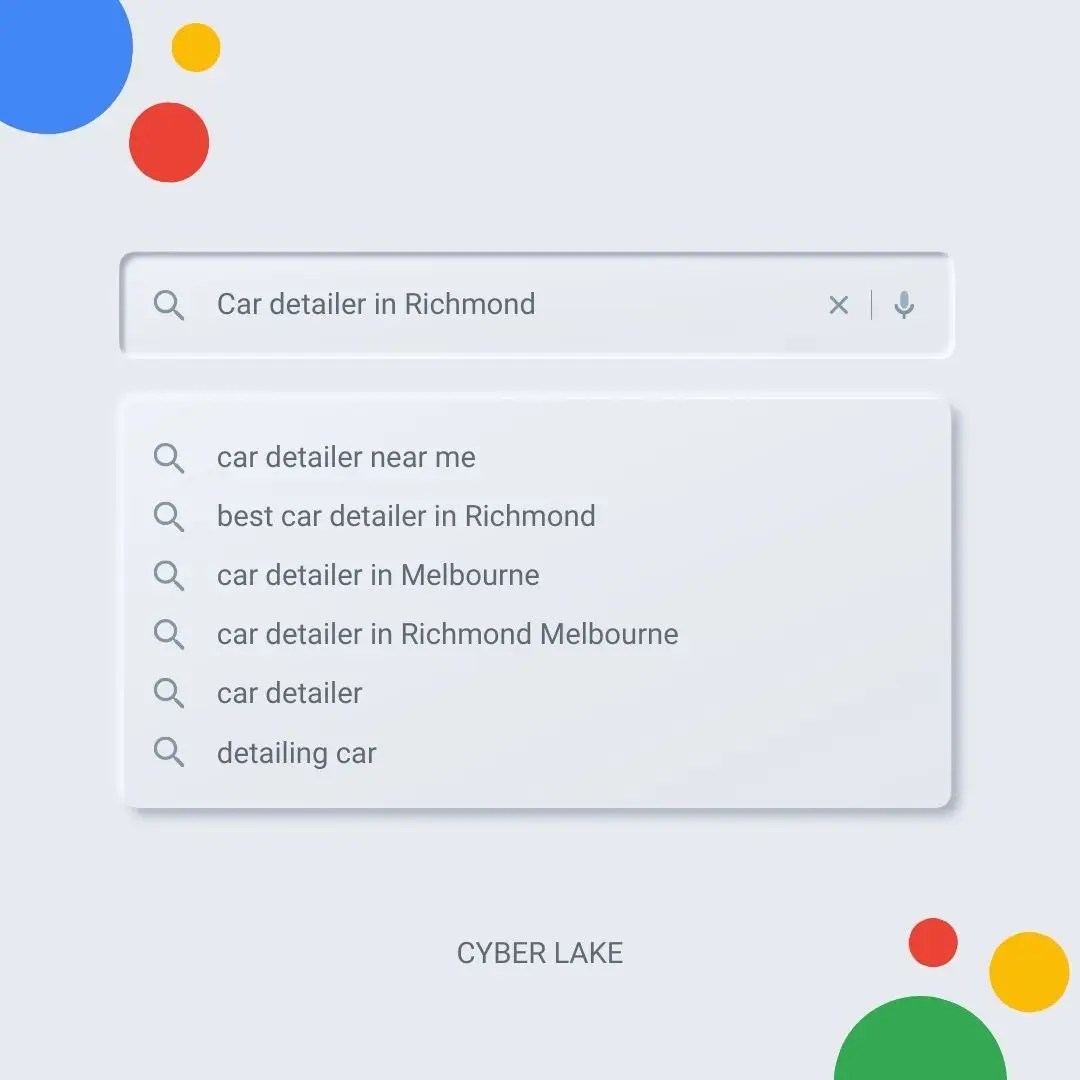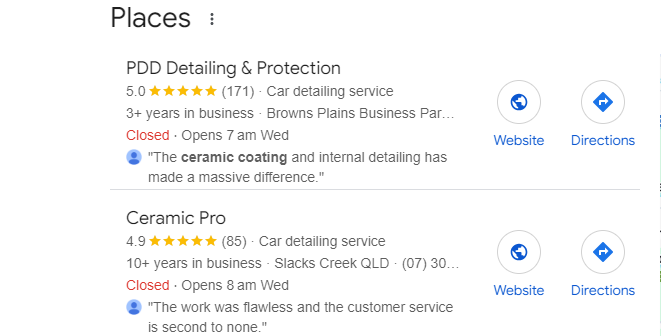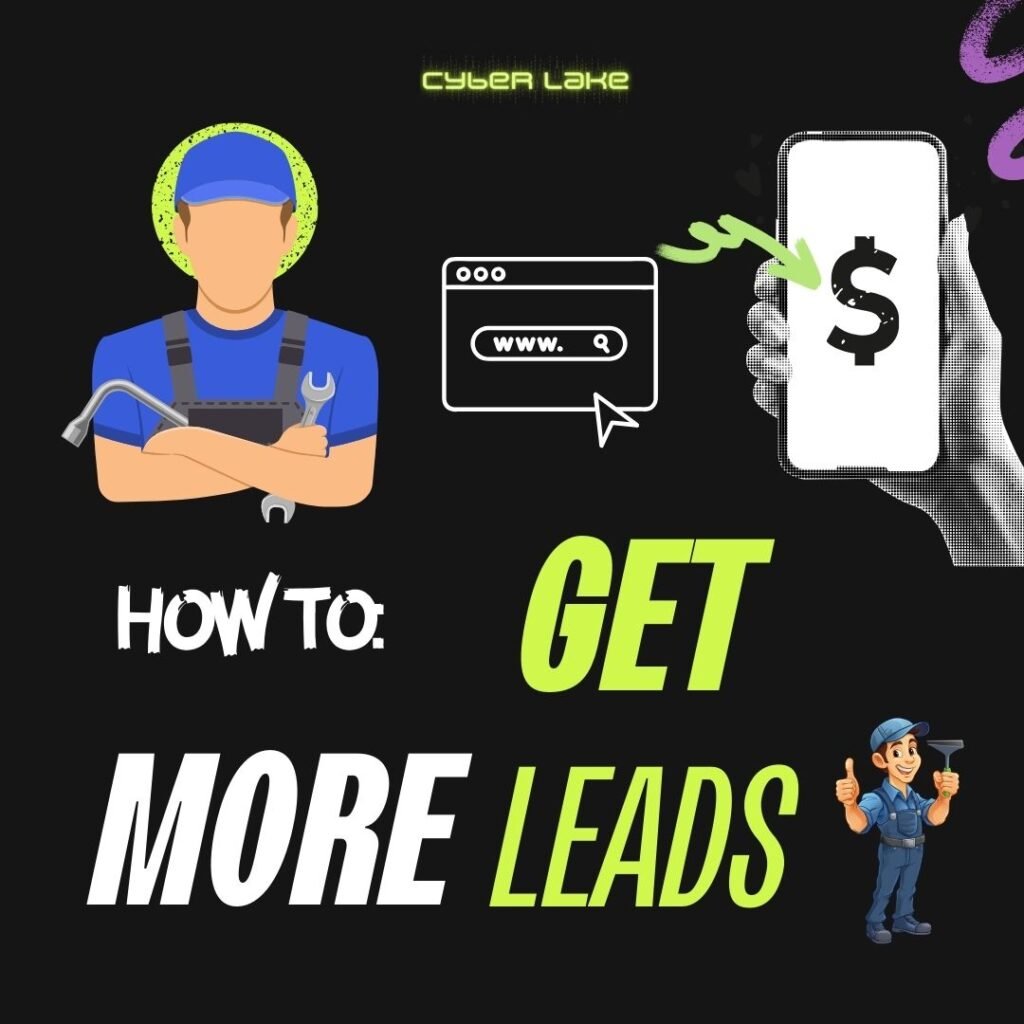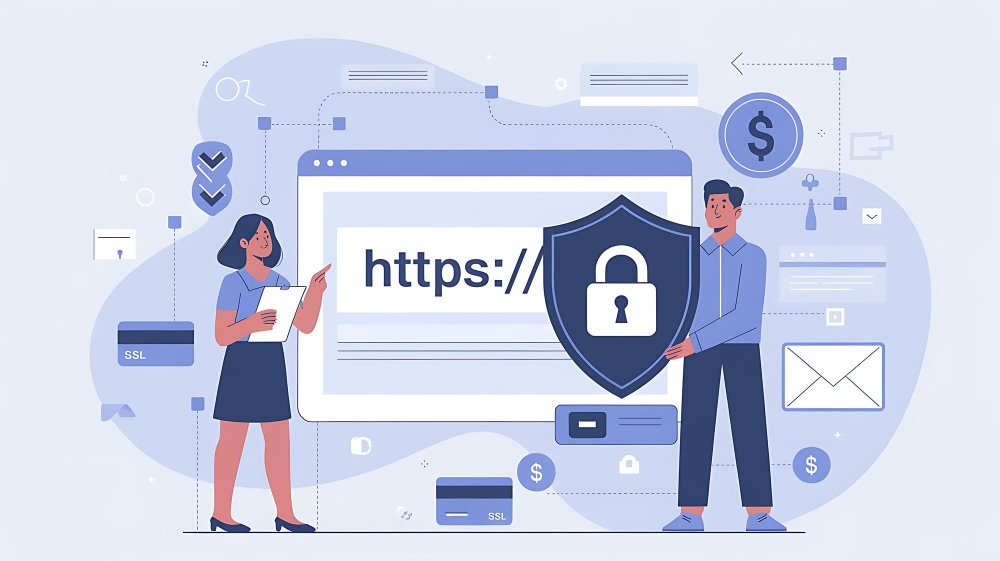Share

What is SEO and How Does it Work for Local Businesses?
In today’s digital age, having a website for your business is essential. However, it’s not enough to just exist online—you need to ensure that your customers can easily find you. That’s where Search Engine Optimisation (SEO) comes in. Whether you’re running a local café, a car detailing service, or a trades business like plumbing or electrical, SEO can help your business rank higher on search engines like Google, driving more local traffic to your website.
In this comprehensive guide, we’ll explain what SEO is, how it works, and—most importantly—how it can benefit your local business. We’ll break it down in a simple, conversational way so that by the end of this article, you’ll feel confident in using SEO to attract more customers from your area.
Table of Contents
- What is SEO?
- How Does SEO Work?
- The Importance of Local SEO for Small Businesses
- On-Page SEO Explained
- Off-Page SEO: Building Your Online Authority
- Technical SEO: Behind the Scenes
- Key Differences Between Paid Search and Organic SEO
- How SEO Can Help Your Local Business
- Google My Business: Your New Best Friend
- Local Citations and NAP Consistency
- How to Create SEO-Friendly Content for Local Businesses
- Measuring SEO Success
- Common SEO Mistakes to Avoid
- Final Thoughts: Why SEO is an Investment in Your Business
1. What is SEO?
SEO stands for Search Engine Optimisation, which is the process of improving your website to increase its visibility on search engines like Google, Bing, and Yahoo. When someone searches for a service or product, such as “plumber near me” or “best car detailing Melbourne,” SEO helps ensure your website appears higher in the search results. The higher your site ranks, the more likely people are to click through to your website.
SEO focuses on organic traffic, which means visitors come to your site through unpaid (or free) listings on search engines, as opposed to paid ads.
For local businesses, SEO isn’t just about getting more visitors—it’s about getting the right visitors. You want people who are nearby, looking for the services you provide, to find your business easily.
2. How Does SEO Work?
SEO works by optimising your website so that search engines can understand it better and rank it higher for relevant searches. While there are over 200 ranking factors that Google and other search engines use to determine the order of search results, they can be broken down into three main categories:
- On-Page SEO: Improving elements on your own website, such as content, keywords, and internal linking.
- Off-Page SEO: Building trust and authority for your site through backlinks and other external factors.
- Technical SEO: Enhancing the technical aspects of your website, such as site speed, mobile-friendliness, and proper indexing.
These factors work together to help search engines understand what your website is about and how relevant it is to the searcher’s query.

3. The Importance of Local SEO for Small Businesses
Local SEO is a subset of SEO that focuses on improving your online visibility in local search results. For example, if you run a car detailing business in Melbourne, you want people in Melbourne searching for car detailing services to find your business.
Local SEO strategies are slightly different from general SEO because they focus on:
- Geographic relevance: Making sure your business is found by people in your area.
- Local business directories: Getting your business listed on Google My Business and other directories.
- Local reviews: Encouraging customers to leave positive reviews on platforms like Google, which helps your rankings.
Local SEO is particularly beneficial for small businesses that rely on local customers, such as restaurants, tradies (e.g., electricians, plumbers), car detailing services, and brick-and-mortar shops.
Let’s dive deeper into each component of SEO to understand how it all works.

4. On-Page SEO Explained
On-Page SEO is all about optimising the content and structure of your website to make it more attractive to search engines and, of course, your visitors. Here are some essential elements of on-page SEO:
1. Keywords
Keywords are the words and phrases people use when searching for products or services online. For example, if you run a car detailing business, you’d want to target keywords like “car detailing Melbourne,” “ceramic coating Melbourne,” or “affordable car wash near me.” By strategically placing these keywords throughout your site (in your titles, meta descriptions, headings, and content), you help search engines understand what your website is about.
Example: Let’s say you own a local plumbing business. You might target keywords such as “emergency plumber Melbourne” or “pipe repair services.” The idea is to use the keywords your customers are likely searching for so that your site appears in the results.
2. Content
High-quality content is essential for SEO success. This means creating engaging, informative, and relevant content for your audience. Blog posts, service pages, and FAQs can all be optimised to help your site rank better. Make sure to include your keywords naturally—don’t stuff them in just to rank, as Google’s algorithms are smart enough to recognise keyword stuffing.
Example: A car detailing business could write a blog about “How to Maintain Your Car’s Paint Between Details” or “Top 5 Benefits of Ceramic Coating for Your Car.” This type of content not only helps your SEO but also provides value to your customers.
3. Title Tags and Meta Descriptions
Your title tags and meta descriptions are HTML elements that appear in the search results. These are often the first things potential customers will see, so they should be well-written and include your primary keywords. A compelling meta description can improve your click-through rate (CTR).
Example: For a car detailing service, a well-optimised title might be: “Car Detailing Melbourne – Affordable & Professional Car Wash Services.”

5. Off-Page SEO: Building Your Online Authority
Off-Page SEO refers to the actions you take outside your website to improve its authority and rankings. The most important aspect of off-page SEO is backlinking—getting other reputable websites to link to your site.
1. Backlinks
Backlinks are like votes of confidence from other websites. The more quality backlinks you have, the more Google will see your site as trustworthy. However, it’s not just about quantity—the quality of the backlinks is crucial.
For example, a local trades business like a plumbing service could benefit from getting backlinks from local home improvement blogs, directories, or local news websites.
2. Social Signals
While social media itself doesn’t directly impact SEO rankings, the traffic and engagement your social posts generate can indirectly boost your SEO. When people share your content, it can result in more visits to your website, which signals to search engines that your site is valuable.
Example: A local electrician might post a blog about “Common Electrical Problems in Older Homes” on their Facebook page. If people share that post, it increases traffic to the website, which can positively impact SEO.
6. Technical SEO: Behind the Scenes
Technical SEO involves optimising the technical aspects of your website to ensure that it’s easy for search engines to crawl and index your content. This includes:
1. Mobile-Friendliness
Since more people now search the internet on their phones, Google prioritises websites that are mobile-friendly. This means your website should look good and function well on mobile devices.
2. Site Speed
Slow-loading websites can hurt your SEO. If your website takes too long to load, visitors will leave, and Google takes this into account. Tools like Google PageSpeed Insights can help you check your site speed and identify areas for improvement.
3. Sitemaps and Indexing
A sitemap is a file that helps search engines understand the structure of your website. Submitting a sitemap to Google through Google Search Console ensures that your website is indexed correctly, which helps your rankings.

7. Key Differences Between Paid Search and Organic SEO
Before we go any further, let’s clarify the difference between paid search (Google Ads) and organic SEO.
Paid Search
With paid search, you pay for your website to appear at the top of the search results for specific keywords. This can provide immediate visibility, but it requires a budget, and once you stop paying, your site’s visibility drops.
Organic SEO
Organic SEO, on the other hand, is a long-term strategy. It takes time to build up your rankings, but once you’re there, you can get consistent traffic without paying for each click.
For local businesses, combining both paid search and organic SEO can be effective. For example, you might use Google Ads to get immediate traffic while working on your SEO to secure long-term results.

8. How SEO Can Help Your Local Business
For local businesses, SEO is a crucial tool to increase visibility and attract customers. Whether you run a car detailing service or a plumbing business, local SEO ensures that people in your area can easily find your business online. Here’s a quick breakdown of how SEO can help your business thrive:
Target Local Keywords:
Use keywords that include your service and location, like “car detailing Melbourne” or “emergency plumber Sydney.” This helps your business show up in local search results, connecting you with nearby customers.
Google My Business:
Setting up and optimising your Google My Business (GMB) profile is key for local visibility. Ensure your name, address, phone number, and hours are accurate. Upload photos and encourage positive customer reviews to build trust and improve your rankings.
Local Backlinks:
Backlinks from other local websites, such as directories, blogs, or local news outlets, help boost your credibility and SEO. Partner with complementary businesses or get featured in local publications to build these valuable links.
Customer Reviews:
Positive reviews on Google, Yelp, and other platforms improve your local rankings and build trust with potential customers. Encourage happy customers to leave reviews to boost your visibility.
Mobile Optimisation:
Make sure your website is mobile-friendly. Many local searches are done on smartphones, and a fast, easy-to-use mobile site will improve both customer experience and your rankings.
Consistency Across Platforms (NAP):
Ensure your business name, address, and phone number (NAP) are consistent across all platforms—Google My Business, social media, and local directories. Inconsistencies can hurt your local SEO efforts.
Action Points for Local SEO Success
Identify Local Keywords
relevant to your business and location.
Optimise Your Google My Business Profile
by ensuring accurate details, adding photos, and responding to reviews.
Build Local Backlinks
by partnering with local businesses or getting featured in local directories or blogs.
Encourage Positive Reviews
from satisfied customers to enhance your business’s online reputation.
Ensure Your Website is Mobile-Friendly
for local searchers on-the-go.
Check NAP Consistency
across all platforms to improve your local credibility and SEO rankings.
9. Google My Business: Your New Best Friend
One of the most powerful tools for local SEO is Google My Business (GMB). This free tool allows you to create a profile for your business, which can show up in local searches and on Google Maps.
Here’s how to optimise your GMB listing:
- Accurate Information: Ensure your business name, address, phone number, and hours of operation are accurate and consistent across the web.
- Photos: Upload high-quality photos of your business, products, or services.
- Categories: Choose the right categories for your business. If you’re a plumber, choose “Plumber,” “Emergency Plumber,” or “Residential Plumber.”
- Reviews: Encourage happy customers to leave reviews. Respond to both positive and negative reviews to show you value customer feedback.

10. Local Citations and NAP Consistency
Local citations are mentions of your business name, address, and phone number (NAP) on other websites. These could be on business directories, review sites, or social media profiles. The more consistent your NAP details are across the web, the better your SEO.
Ensure your NAP details are accurate on your website, Google My Business, Yelp, Facebook, and any other platform where your business appears.
11. How to Create SEO-Friendly Content for Local Businesses
Content is a critical part of any SEO strategy. For local businesses, it’s important to create content that speaks to your local audience. Here’s how to create SEO-friendly content:
- Target Local Keywords: Use tools like Google Keyword Planner or Ubersuggest to find keywords related to your business and location.
- Write for Your Audience: Your content should be helpful and relevant to your audience. For example, if you run a car detailing business, you could write articles like “How to Maintain Your Car’s Shine Between Details” or “The Benefits of Ceramic Coating for Melbourne’s Climate.”
- Use Local References: Mention local landmarks, events, or neighbourhoods in your content. This can help Google understand that your business is local.
12. Measuring SEO Success
Once you’ve implemented your SEO strategies, it’s important to track your progress. Here are some key metrics to measure:
- Organic Traffic: Use Google Analytics to see how much traffic your site is getting from organic search.
- Keyword Rankings: Track your rankings for important keywords using tools like SEMrush or Ahrefs.
- Local Pack Rankings: For local businesses, check if your business shows up in the “local pack” of search results.
- Conversions: Monitor how many visitors from organic search are converting into leads or customers.
13. Common SEO Mistakes to Avoid
While SEO can be incredibly beneficial, there are some common mistakes to avoid:
- Keyword Stuffing: Using too many keywords unnaturally can hurt your SEO.
- Ignoring Mobile: If your site isn’t mobile-friendly, you’ll miss out on a significant amount of traffic.
- Not Updating Content: Regularly updating your content helps keep it relevant and signals to Google that your site is active.
14. Final Thoughts: Why SEO is an Investment in Your Business
SEO might take time to show results, but it’s a long-term investment that pays off. For local businesses like car detailing services or plumbing companies, focusing on local SEO ensures that you’ll be found by the people who are looking for your services in your area.
By optimising your website, building local authority, and staying consistent with your efforts, you’ll see an increase in traffic, leads, and ultimately, sales. Whether you’re a small café, a car detailing business, or a tradie, SEO is the key to growing your online presence and attracting more local customers.
Start implementing these SEO strategies today, and watch your business grow over time.
-
 How to Keep All Accordion Sections Expanded in Elementor by DefaultCode
How to Keep All Accordion Sections Expanded in Elementor by DefaultCode -
 How to Get 30 Leads in 30 Days for Your Automotive BusinessAutomotive
How to Get 30 Leads in 30 Days for Your Automotive BusinessAutomotive -
 How to Install an SSL Certificate on Let's Encrypt for Lightsail WordPressAWS
How to Install an SSL Certificate on Let's Encrypt for Lightsail WordPressAWS -
 What is SEO and How Does it Work for Local Businesses?Marketing
What is SEO and How Does it Work for Local Businesses?Marketing -
 How to Play Audio with the Click of a Button on WordPress or Any WebsiteCode
How to Play Audio with the Click of a Button on WordPress or Any WebsiteCode
